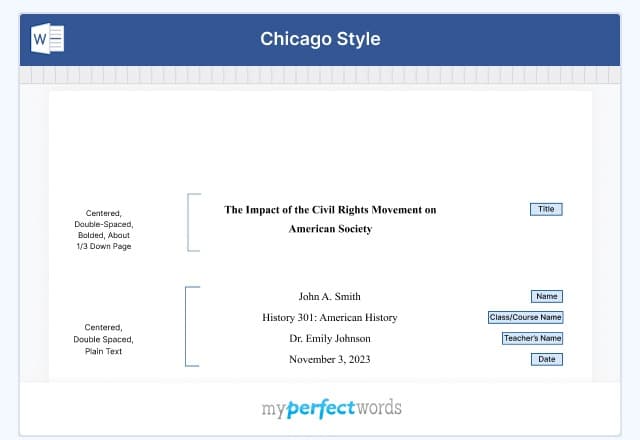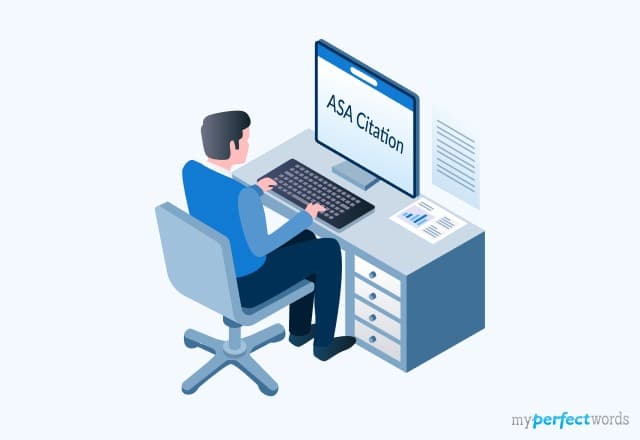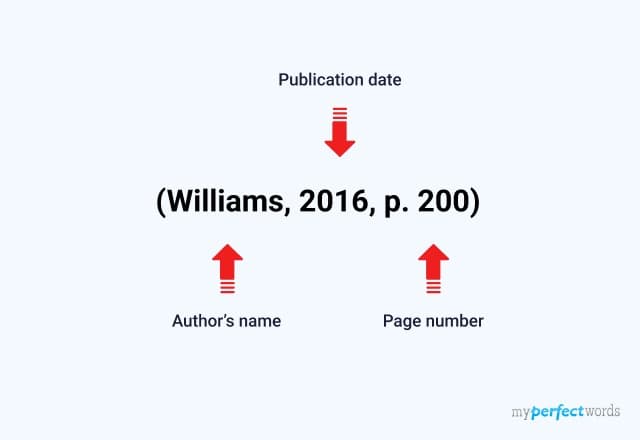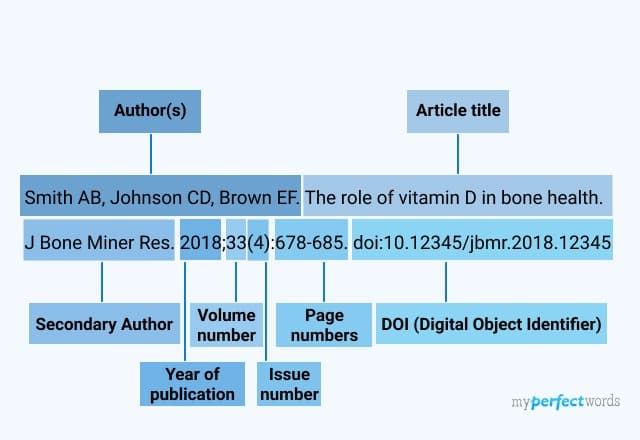

Are you a medical student trying to figure out how to cite sources in your research papers? It's a common struggle for students, and it can be as confusing as a maze!
We know that in medical and scientific writing, the use of proper citations is not just a good practice; it's a critical necessity. While navigating the rules of American Medical Association AMA style citations can be tricky, fret not, because we have got you covered.
In this article, we're here to simplify the process for you. We'll explain what they are, how to correctly cite in AMA style, and provide practical examples. Additionally, we'll share best practices for effective application in your medical and scientific writing.
Let’s explore the AMA style in detail!
On This Page![]()
- 1. What is AMA Style?
- 2. Elements of an AMA Citation
- 3. AMA Style Citation Formatting Guide
- 4. AMA Style Citation Examples
- 5. AMA vs. Other Citation Styles
- 6. Online Tools and Resources
- 7. Best Practices for Using AMA Style
What is AMA Style?
AMA Style, or the American Medical Association style, is a set of rules for writing and citing sources in medical and scientific research papers. It helps maintain consistency and clarity in healthcare-related writing.
AMA style started its journey in the early 1960s and has been evolving ever since. It began as a way for doctors and researchers to standardize their writing and make it easier for others to understand their work.
Besides AMA, NLM and AAA styles are also specifically developed to guide the publishers and editors of medical journals.
Elements of an AMA Citation
An AMA (American Medical Association) citation typically consists of the following elements:
- Author(s): The person or group responsible for creating the work.
- Title: The title of the source.
- Edition (if applicable): Indicates the specific edition of a book.
- City of Publication: The location where the source was published.
- Publisher: The entity responsible for publishing the source.
- Year of Publication: The year the source was published.
- Abbreviated Journal Title (for journal articles): The abbreviated title of the journal in which the article was published.
- Volume and Issue (for journal articles): The volume and issue number of the journal.
- Page Numbers (for journal articles): The page range of the article in the journal.
- URL (for web sources): The web address where the source can be found.
- Published Date (for web sources): The date when the web content was published.
- Accessed Date (for web sources): The date when you accessed the web content.
These elements can vary depending on the type of source you are citing. Remember, not all elements will be present in every citation.
AMA Style Citation Formatting Guide
In this section, we'll dive into the general rules for AMA citation:
- Numerical Superscripts: AMA Style relies on numerical superscripts for in-text citations. Each source you cite receives a unique number corresponding to its entry in the reference list. Place these superscripts outside punctuation marks like periods and commas.
- Author Names: When citing authors in AMA Style, use the last name followed by initials without periods and with no spaces in between.
- Title Capitalization: Capitalize only the first letter of the title, proper nouns, and the first word after a colon in titles of books, articles, and other works in the reference list.
- Italics: Titles of journals and books should be italicized in the reference list.
- Punctuation: Use minimal punctuation and follow AMA Style guidelines closely. For instance, use commas to separate different elements within a citation and use periods to end the citation.
AMA Style Citation Examples
In this section, we will provide you with detailed examples of AMA Style citations for various scenarios.
Example of In-Text Citations
In AMA Style, in-text citations are numerical superscripts that correspond to the source's full citation in the reference list. Here are some examples:
Example | In-Text Citation | Explanation |
Citing Sources with One Author | "The research findings were groundbreaking.2" | This in-text citation refers to a book with one author. The superscript "2" corresponds to the full citation in the reference list. |
How to Cite Multiple Authors | "Smith et al.4 conducted a comprehensive study." | In this example, a journal article with multiple authors is cited, "et al." indicates that more authors are not listed. The superscript "4" links to the full reference in the reference list. |
Citing Sources with No Author | "The statistics showed a significant increase7." | This in-text citation is for an online source with no listed author. The superscript "7" points to the detailed citation in the reference list. |
Example of Reference List Entries for Various Source Types
AMA Style of referencing dictates specific formats for different types of sources. Here are some examples:
Source Type | Reference List Example | Explanation |
Book | Smith AB. Medical Research Methods. New York: Publisher; 2022. | This example includes the author's name (Smith AB), the book's title (Medical Research Methods), the city of publication (New York), the publisher, and the publication year (2022). |
Journal Article | Johnson CD, Williams EF. Title of the article. Journal of Medicine. 2021;45(3):123-135. | This example includes the names of the authors (Johnson CD, Williams EF), the article title, the journal title (Journal of Medicine), the publication year (2021), the volume (45), issue (3), and page numbers (123-135). |
Website | National Institutes of Health. [Insert Title of the Webpage]. https://www.nih.gov/page. Published [Year]. Accessed [Date]. | It includes the name of the organization (National Institutes of Health), the title of the webpage (to be inserted), the URL, the publication year (to be inserted), and the date you accessed the webpage (to be inserted). |
Government Document | United States. Department of Health and Human Services. Healthcare Policies and Practices. Washington, D.C.; 2020. | It includes the name of the country (United States), the government department (Department of Health and Human Services), the title of the document (Healthcare Policies and Practices), the location (Washington, D.C.), and the publication year (2020). |
Conference Paper | Anderson LM, Cooper RJ. Title of the paper. In: Proceedings of the International Medical Conference; 2019. | It includes the names of the authors (Anderson LM, Cooper RJ), the paper title, the conference title (Proceedings of the International Medical Conference), and the conference year (2019). |
How to Cite Online Sources and Electronic Publications
For online sources, include the DOI or URL in the reference list.
Here's an example:
AMA vs. Other Citation Styles
When it comes to academic and scientific writing, various citation styles are in use, each with its own set of rules and guidelines. Here, we'll compare AMA (American Medical Association) with five other common citation styles, highlighting key differences:
- AMA: Primarily used in medical and scientific research, AMA is known for its numerical superscripts and minimal use of capitalization.
- APA: Widely utilized in the social sciences, APA format employs author-date citations and emphasizes the use of italics for titles.
- MLA: Used in humanities disciplines, MLA format employs author-page citations and includes a Works Cited page.
- Vancouver: Also used in medical research, the Vancouver style relies on numerical citations within square brackets in the order of appearance.
- Harvard: Widely used in a variety of disciplines, Harvard style employs author-date citations, with a reference list.
- Chicago: Used in a range of fields, the Chicago style includes both author-date and notes-bibliography systems.
Key Differences in Citation Styles
Let’s explore the major differences between these citation styles:
- Field of Use: Each style is suited to specific fields. AMA is commonly used in medicine and science, while APA caters to psychology and social sciences. MLA is preferred for humanities, while Vancouver is specific to medical and scientific research. Harvard is versatile, and Chicago is employed in a wide range of disciplines.
- In-Text Citations: AMA employs numerical superscripts, while APA uses an author-date format, and MLA incorporates author-page citations. Vancouver follows the numerical superscript approach, Harvard relies on an author-date format, and Chicago can utilize footnotes or an author-date system.
- Reference List: AMA uses a list of numbered citations, while other styles have alphabetical lists. Chicago is unique, as it can use footnotes or an alphabetical author-date format.
- Book Citation: The way books are cited can vary significantly. AMA uses numbered citations and follows a specific format. APA, MLA, Vancouver, Harvard, and Chicago have their distinctive styles for book citations.
- Journal Article Citation: Similar to books, the citation of journal articles differs among styles. AMA utilizes numbered citations with specific formatting. Other styles, like APA, MLA, and Chicago, have their unique ways of citing journal articles.
Online Tools and Resources
When it comes to AMA-style citations, a variety of online tools and resources can make the process more accessible and efficient. Here, we'll explore some of the best options available to help you with your AMA citations.
- EndNote: You can create AMA-style EndNote citations with this powerful reference management software. It can help you organize your sources and automatically generate citations in the correct format.
- AMA Manual of Style, 11th edition: The AMA Manual of Style is the official guide for AMA citations. While it may not be freely available, many universities and institutions provide access to it. It's the most comprehensive resource for AMA style.
- University Libraries: Many university libraries provide online guides for various citation styles, including AMA. These guides often include detailed explanations and examples specific to AMA style.
- Google Scholar: When you search for academic articles on Google Scholar, you can often find citations in AMA style. This can be a useful resource for seeing how different types of sources are cited in AMA format.
There are indeed online AMA style citation generators at your disposal, but it's important to verify their authenticity before using them.
Best Practices for Using AMA Style
In this section, we'll explore some best practices to help you seamlessly integrate citations and maintain high accuracy.
- Contextual Relevance: Ensure that your citations are contextually relevant. Citations should support your argument, provide evidence, or give credit to the original source.
- Signal Phrases: Use signal phrases to introduce citations. Signal phrases provide readers with a brief idea of the source's content and relevance. For example, "According to Smith3," or "In a study by Johnson and Williams6."
- Quotations: When using direct quotes, enclose them in double quotation marks and provide the page number in the citation. E.g., "This is a direct quote from the source4 (p. 15)."
- Paraphrasing: Whenever possible, paraphrase the source information rather than relying on direct quotes. Paraphrasing allows you to present the information in your own words, demonstrating your understanding of the content.
- Check Citation Details: Verify that all citation details, including authors' names, publication years, and page numbers, are accurate and consistent with the corresponding reference list entry.
Common Mistakes to Avoid When Using AMA Style
Let’s take a look at some mistakes that you should avoid when using this type of citation style:
- Incorrect Superscript Placement: Make sure you place superscript numbers after any punctuation, not before.
- Overcapitalization: Avoid overcapitalizing words in titles and headings. AMA Style is known for its restrained use of capital letters.
- Neglecting DOI/URLs: For online sources, always include DOI (Digital Object Identifiers) or URLs. Neglecting this important detail is a common mistake.
- Inaccurate Abbreviations: When using journal abbreviations, ensure they are accurate. Also, conform to the standard abbreviations listed in the journal's "Instructions for Authors."
Wrapping Up!
In the world of academic writing, accurate citations are a big deal. Our blog has given you the insights to do it right. With examples, best practices, and helpful resources, you're ready to cite your ama-style paper perfectly.
Remember, each citation you make is like adding a strong link to the chain of knowledge. So, use your new citation skills to make your work clear and believable.
Short on a deadline, and wondering can someone do my essay? Get our essay writing help online.
At MyPerfectWords.com our experts are here to lend a helping hand for your essay citation and writing tasks.
We work with native paper writers and they are here 24/7 to help you with urgent orders!

Write Essay Within 60 Seconds!
Use our AI tool to generate high quality essay
WRITTEN BY
Caleb S.
Caleb S. has been providing writing services for over five years and has a Masters degree from Oxford University. He is an expert in his craft and takes great pride in helping students achieve their academic goals. Caleb is a dedicated professional who always puts his clients first.
Keep reading
Different Citation Styles: Detailed Guide With Tips

MLA Formatting Simplified - Rules for Page Formatting, Citations, & References

Understanding the APA Format: A Complete Guide with Examples

APA vs MLA | The Key Differences and Similarities

How to Cite in Chicago Style - Examples and Tips

Learn IEEE Citation and Formatting With This Simple Guide

Mastering ASA Format: Guide to Proper Academic Writing

How to do Harvard Style Citation - Format, Citation and Samples

A Detailed ACS Citation Manual for Scientific Papers

How to Master NLM Citation: A Detailed Guide With Tips

A Complete AAA Citation Guide with Examples

Simple APSA Citation and Formatting Guide for Students

How to Cite in Oxford Referencing Style - Complete Guide

